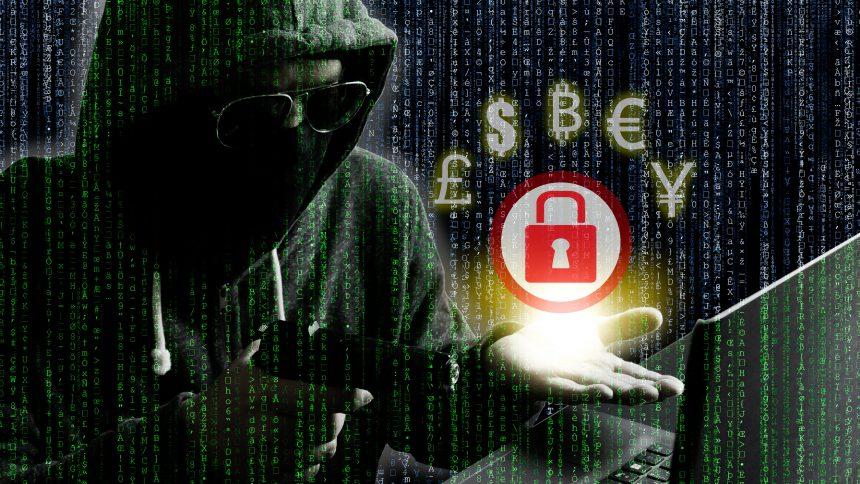Ransomware is a type of malicious software that encrypts a victim’s files, rendering them inaccessible until a ransom is paid to the attacker. It has become one of the most notorious and damaging types of malware due to its ability to cause significant disruptions and financial losses. By targeting both individuals and organizations, ransomware can lock critical data and demand payment for its release, often leading to severe consequences if not managed promptly.
The Rdanger Ransomware Threat
Rdanger is a specific strain of ransomware that follows the standard modus operandi of encrypting files and demanding a ransom for decryption. This malware typically infiltrates a system through phishing emails, malicious attachments, or compromised websites. Once installed, Rdanger encrypts files on the victim’s computer using a strong encryption algorithm, making them unreadable without the decryption key held by the attacker.
After successful encryption, Rdanger appends a specific file extension to the encrypted files, such as .rdanger. This alteration is a clear indication that files have been compromised by this ransomware. The consequences of an Rdanger infection are severe: important files become inaccessible, leading to potential data loss and operational disruptions. The ransomware also drops a ransom note on the infected system, which provides instructions on how to pay the ransom and recover the encrypted files.
The Ransom Note
The ransom note left by Rdanger typically contains several crucial pieces of information. It will instruct the victim on how to contact the attacker, usually via an email address or a dark web site. The note often includes a demand for payment in cryptocurrency, which is preferred by attackers due to its anonymity. It may also include threats about the permanent deletion of files if the ransom is not paid within a specified timeframe, adding urgency to the situation. The note is designed to intimidate and coerce the victim into paying, promising decryption tools or keys upon payment.
Text presented in this message:
ATTENTION!
All your important files are encrypted with our “RDanger Ransomware”.
Don’t worry, you can return all your files!
The only one method of recovering files for you is to purchase decrypt tool and unique key.
This software will decrypt all your encrypted files after your payment in cryptocurrency.
What guarantees do you have?
You can send one of your encrypted files from your PC and we will decrypt it for free.
But we can decrypt only 1 file for free. File must not contain valuable information.
Discount 50% available if you contact us by email first 72 hours.
Be sure that you’ll never restore your data without payment.
Check your e-mail “Spam” or “Junk” folder if you don’t get answer more than 24 hours.
Write to email: myEmailThere
Our reserved email: 2myEmailThere
Your personal ID: 117-DB6-262
General Purpose and Threats
The primary purpose of ransomware like Rdanger is to extort money from victims. It infiltrates systems using various methods such as phishing attacks, malicious downloads, or exploiting vulnerabilities in software. Once installed, it encrypts files to make them inaccessible and demands a ransom in exchange for the decryption key. The threat it poses is significant: not only does it disrupt normal operations, but it can also result in financial loss if the ransom is paid or in data loss if backups are not available.
Symptoms of Rdanger Infection
Recognizing a ransomware infection like Rdanger involves observing several key symptoms:
- Files with unusual extensions, such as
.rdanger - Inaccessibility of files and folders
- Presence of a ransom note on the desktop or within directories
- Unusual system behavior or sluggish performance
Detection Names
To identify if Rdanger ransomware is affecting your system, you can use the following detection names in your security software:
- Rdanger ransomware
- Rdanger.exe
- Rdanger encrypted files
- .rdanger file extension
Similar Threats
Other ransomware strains similar to Rdanger include:
- CryptoLocker: Known for encrypting files and demanding payment in Bitcoin.
- WannaCry: Infamous for exploiting Windows vulnerabilities to spread rapidly.
- Ryuk: Targeting large organizations with significant ransoms.
Comprehensive Removal Guide
Step 1: Disconnect from the Internet
- Immediately disconnect your computer from the internet to prevent the ransomware from communicating with its command and control servers or spreading to other devices on your network.
Step 2: Boot into Safe Mode
- Restart your computer and boot into Safe Mode with Networking. This minimizes the ransomware’s ability to run and causes fewer processes to start automatically.
Step 3: Use Anti-Malware Software
- Download and install a reputable anti-malware tool like SpyHunter. Perform a full system scan to detect and remove Rdanger. SpyHunter is recommended for its thorough scanning capabilities and ease of use.
Step 4: Delete Suspicious Files
- Manually search for and delete any files associated with Rdanger, especially those in the system folders or with the
.rdangerextension. Be cautious and ensure you do not delete system-critical files.
Step 5: Restore Files from Backup
- If you have backups of your files, restore them from a clean source. Ensure that the backups are not infected.
Step 6: Change Passwords
- After removing the ransomware, change passwords for your accounts and services, particularly those that were accessed or stored on the infected computer.
Step 7: Update and Patch
- Ensure your operating system and software are updated to protect against vulnerabilities exploited by ransomware.
Prevention Tips
To avoid future ransomware infections:
- Keep your operating system and software up to date with the latest security patches.
- Use robust and updated anti-malware solutions.
- Avoid clicking on suspicious links or downloading attachments from unknown sources.
- Regularly back up important files and store backups in a secure, offline location.
Recommended Tool: SpyHunter
To scan for and remove Rdanger and other malware threats, we highly recommend using SpyHunter. It provides a comprehensive solution for detecting and eliminating ransomware and other malicious software. Download SpyHunter today and start with a free scan to protect your computer from ransomware threats.
If you are still having trouble, consider contacting remote technical support options.





